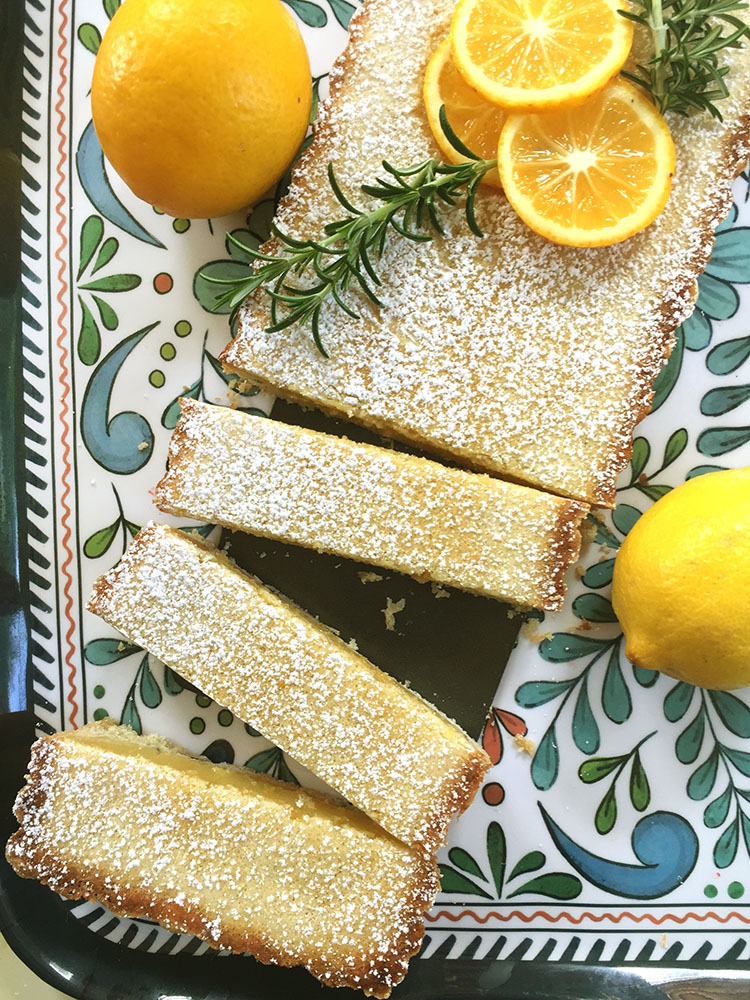
Lemon bars bring up good memories…they were among the first treats I ever prepared and took to share with others. I was a freshman in high school, in Latin class (yes, Latin…do they teach it anymore?), and since we were (surprisingly) a small group, we often got permission to bring and share goodies, along with put on little plays about mythology, etc. The class was one of my favorite memories about high school.
As for the lemon bars, I remember them as something that could have been better, although I had no real frame of reference, and they were actually well-received. Made with frozen lemonade concentrate, the filling was runny and uncharacteristically orange due to the deep color of the egg yolks from my mom’s free range hens. The filling and crust was cloying; but we were in high school, so excessive sugar was never an issue.
Still, they had pretty good lemon flavor, nice and tart, which is key to a good lemon bar. I’ve made lemon bar recipes since that were so lacking in lemon that they were nothing more than a shortbread cookie with a veneer of lemon glaze.
So balance is needed. The right ratio of crust to filling and tart to sweet, and lemon must be the star. The crust, while buttery and flavorful, should also not be too sweet and only lend support (in structure and flavor) to a filling that should be soft and thick and creamy, but not runny nor dry. And certainly not too skimpy.
With all these particulars in my demands, it took me a long time to find the right lemon bar recipe, the one that really tasted like lemons, not a lemon-flavored cookie. After a few dry and bland and too-sweet disappointing attempts, I eventually tried Ina Garten’s recipe from her book, “Barefoot Contessa Parties!†(Clarkson Potter; 2001). The recipe requires a lot of lemons and includes both juice and zest, as well as a lot of sugar, to balance out all that tart lemon. But what you end up with is a large pan of thick, sumptuous, very perfectly tart lemon bars.
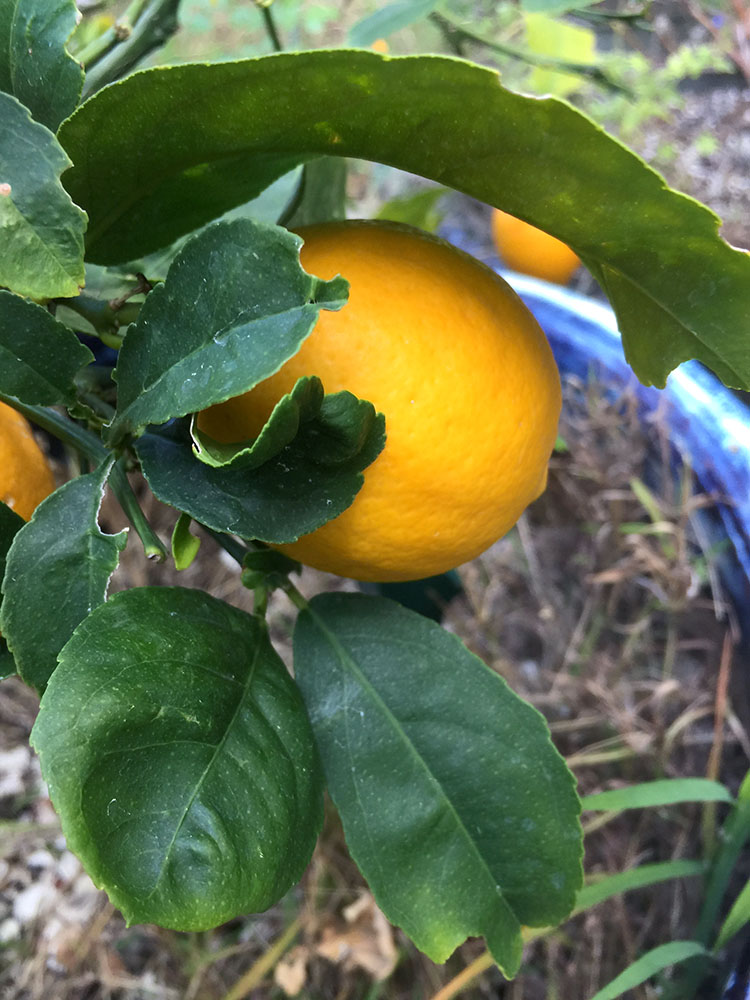
[I] wanted to revisit that lemon bar recipe this month, namely because I wanted to put my Meyer lemons, who journey so hard and so long to get here, to good use. I had some extra in plump, juicy condition, ready to be put to work.
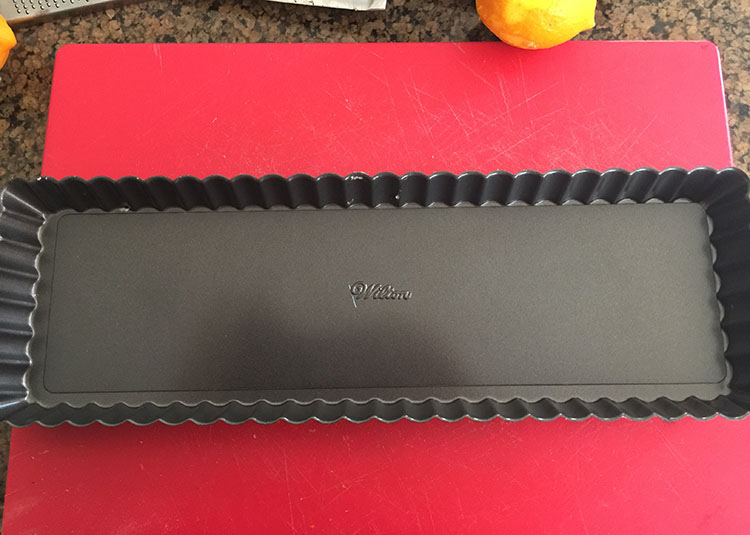
[B]ut I also wanted to elevate the presentation of the bars just a bit. If you have lemons, make lemon bars…and if you have lemon bars, why not make them as a tart? I had a long, narrow tart pan, and I thought I could make the bars in the pan and cut them in strips or “fingers†for a more elegant serving. Also, as hard as it is to believe, I didn’t really need to make a 13-by-9-inch pan of bars, as these would not be shared with a group, but just one other person. So I decided to test out cutting Ina’s recipe in half for this variation.
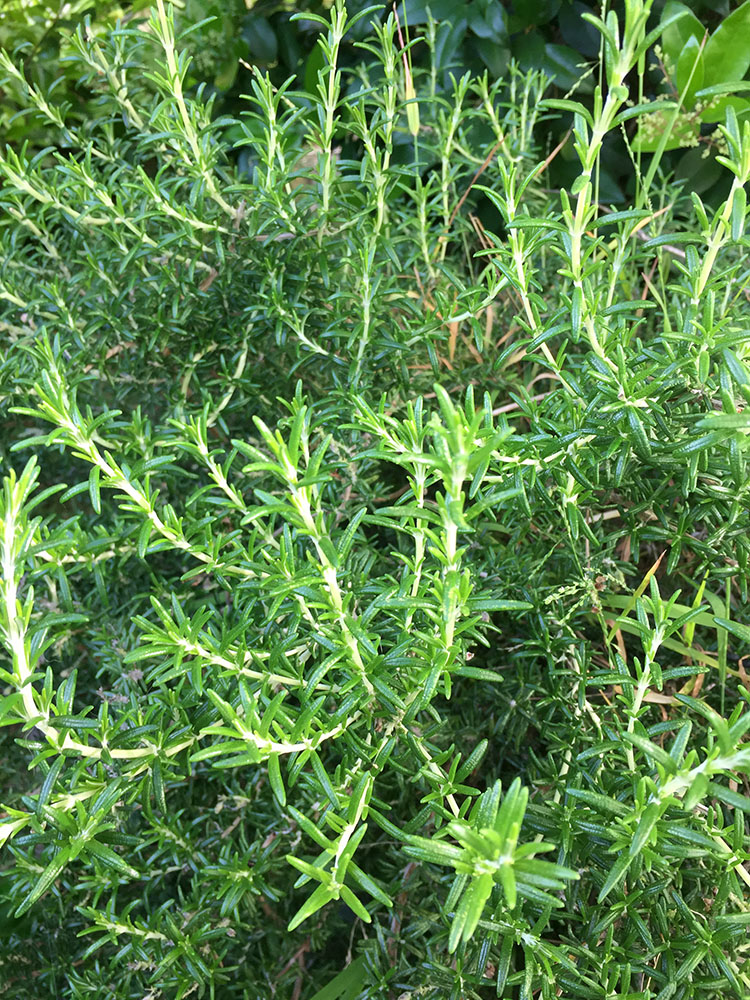
[I ]also wanted to add a little something to the buttery shortbread crust — a little rosemary, of which I have more than plenty. I love herbed shortbreads, and since rosemary and lemon go so well together, I though it would be nice supporting flavor in the bars.
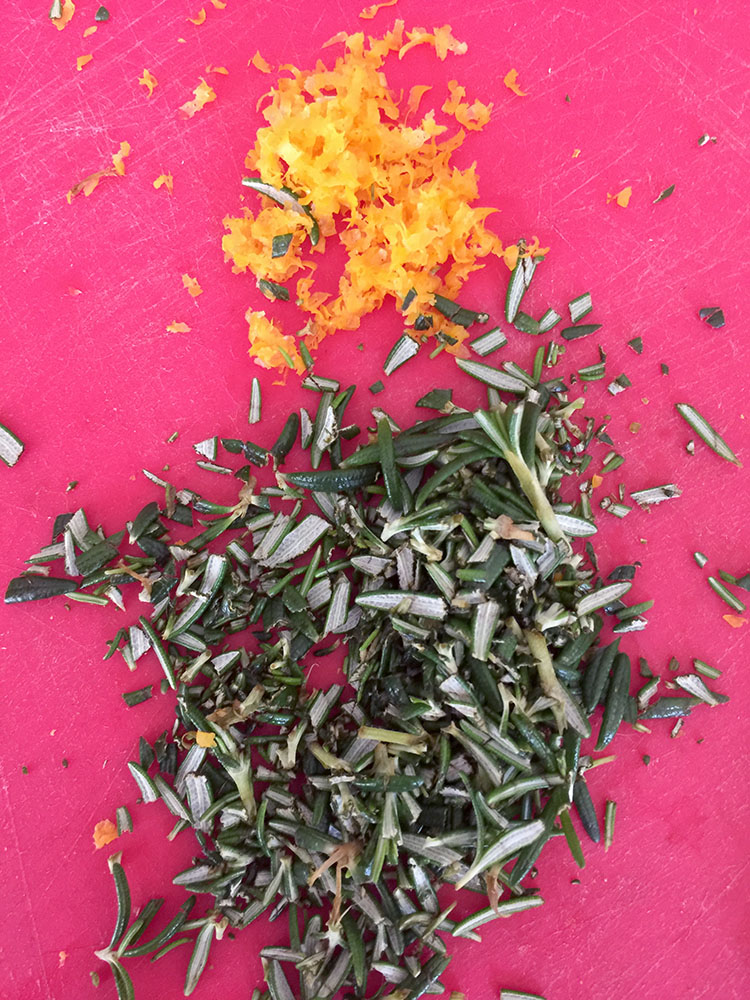
[I]na’s bars do not include any lemon in the crust, either, so I decided to add a little lemon zest, along with the rosemary, in the crust.
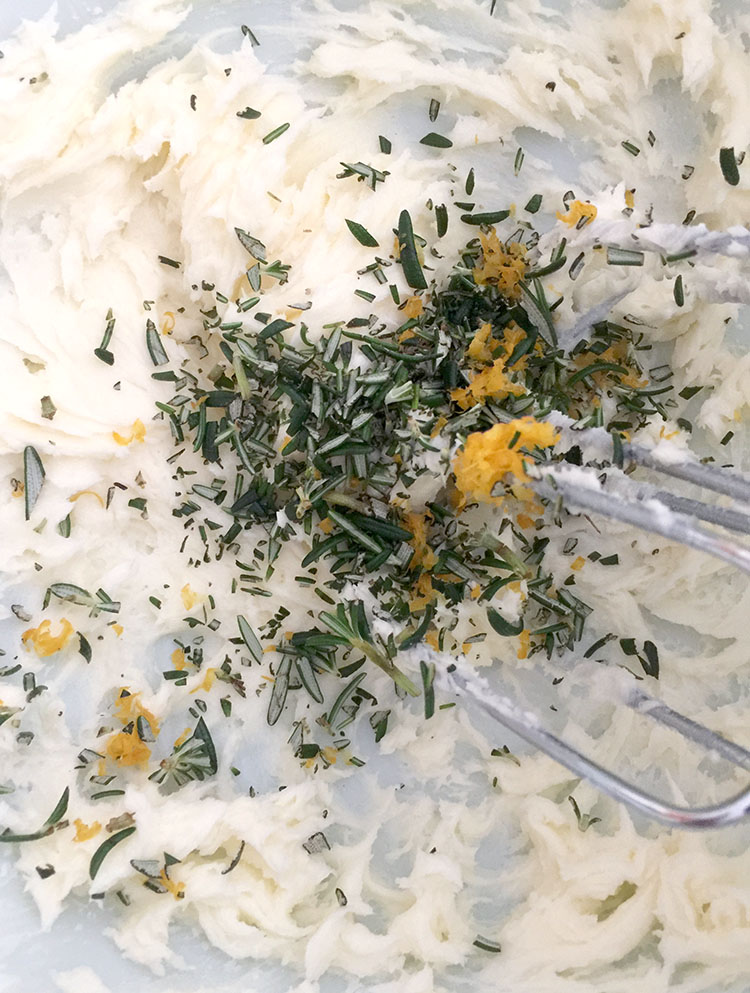
[T]he crust is an easy shortbread that begins by creaming butter and sugar, then adding flavorings (rosemary and zest), salt and flour.
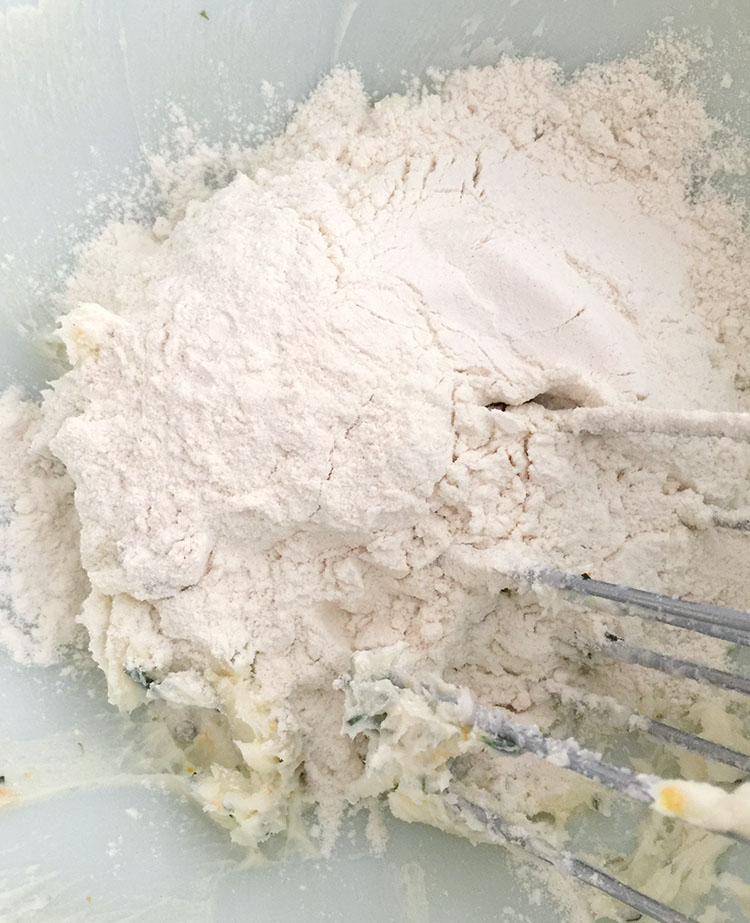
[T]he crust dough comes out a little crumbly, but can be pressed together.
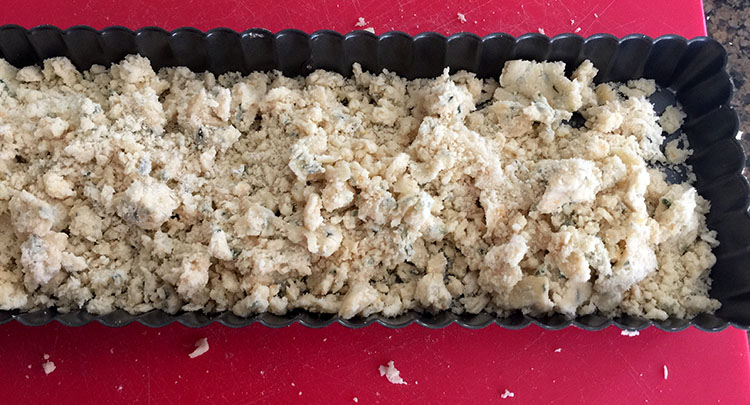
[I] distributed the dough in the tart pan and began pressing the dough somewhat evenly up the sides and along the bottom of the pan.
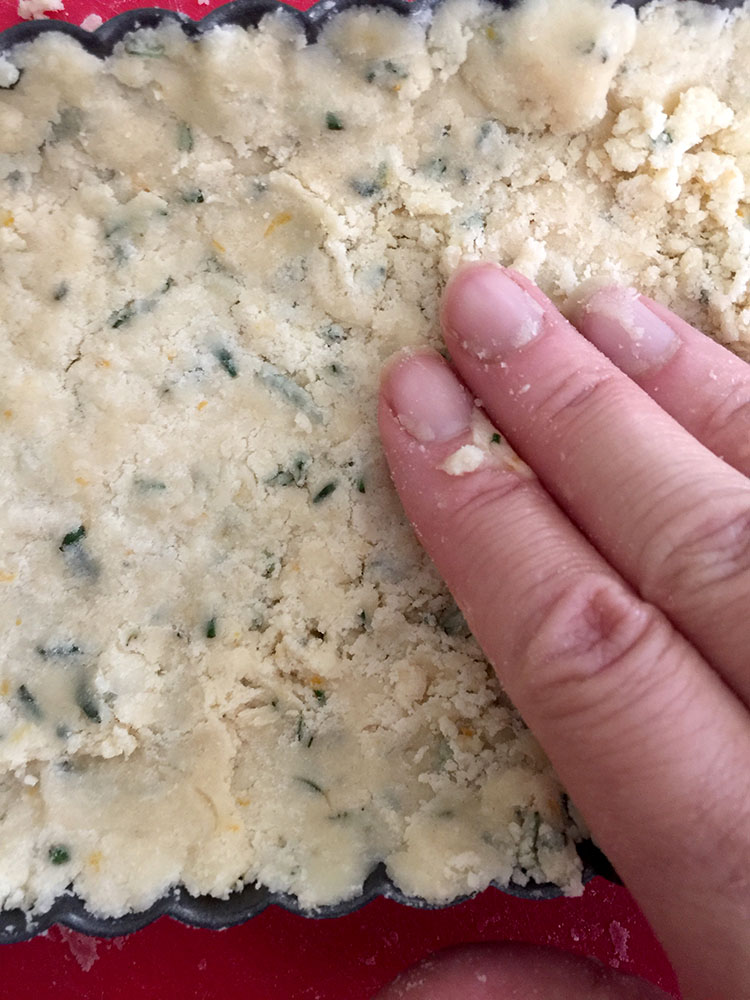
[T]he crust looked nice with the green flecks of aromatic rosemary throughout. I was excited about this pan. And tarts! With the ease of pressing in a crust to these tart pans, I considered my next Thanksgiving to possibly be tart-centric.
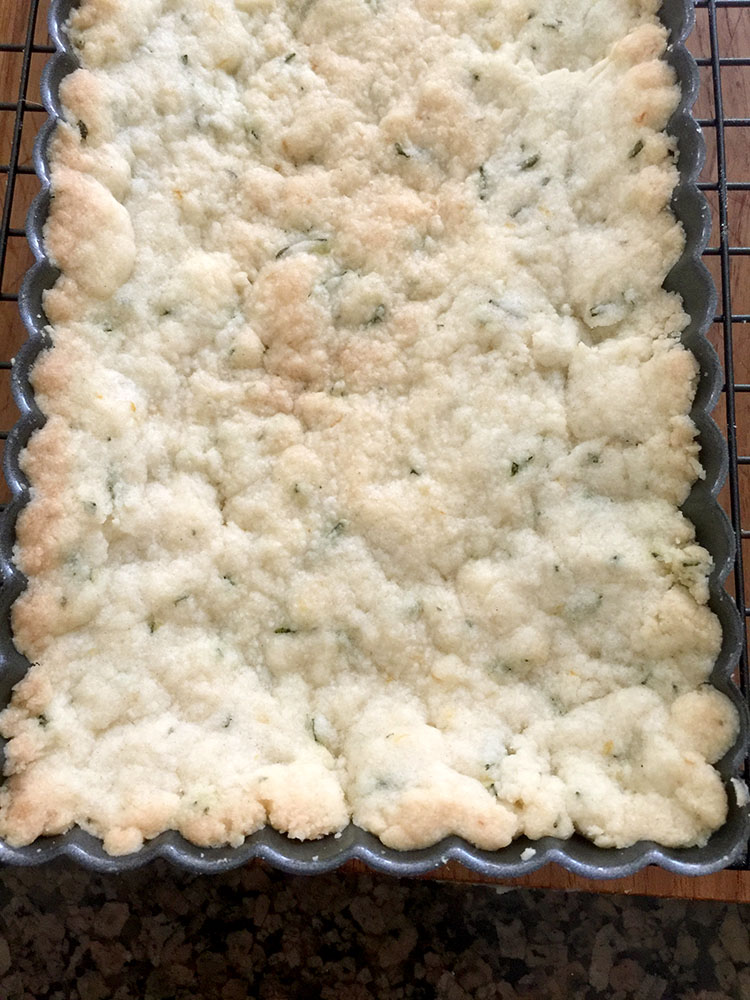
[T]he crust baked up to a golden brown in about 10 minutes (I actually may have let it bake slightly too long), and it held its shape well.

[I]n Ina’s full recipe, a cup of lemon juice is called for in the bars’ filling. Cutting it in half reduced my lemon needs, but it still took about four smallish lemons to get the right amount of juice.
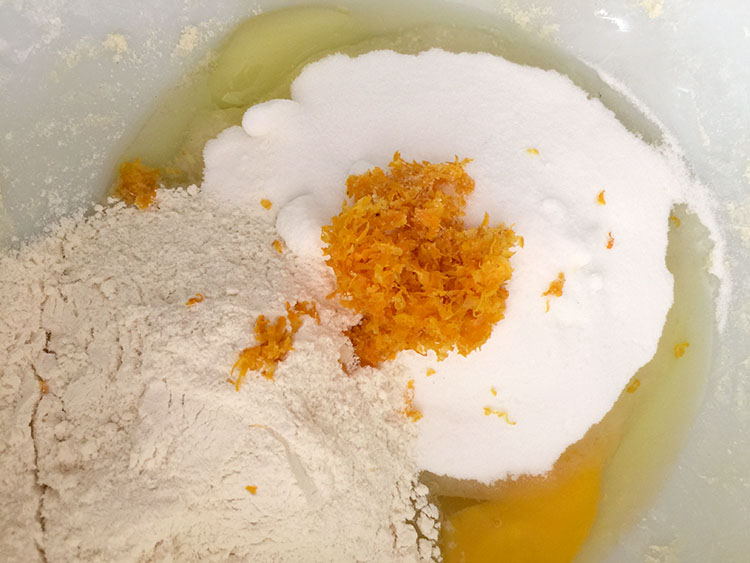
[T]he filling is an easy blending of eggs and sugar, flour, lemon juice and zest.
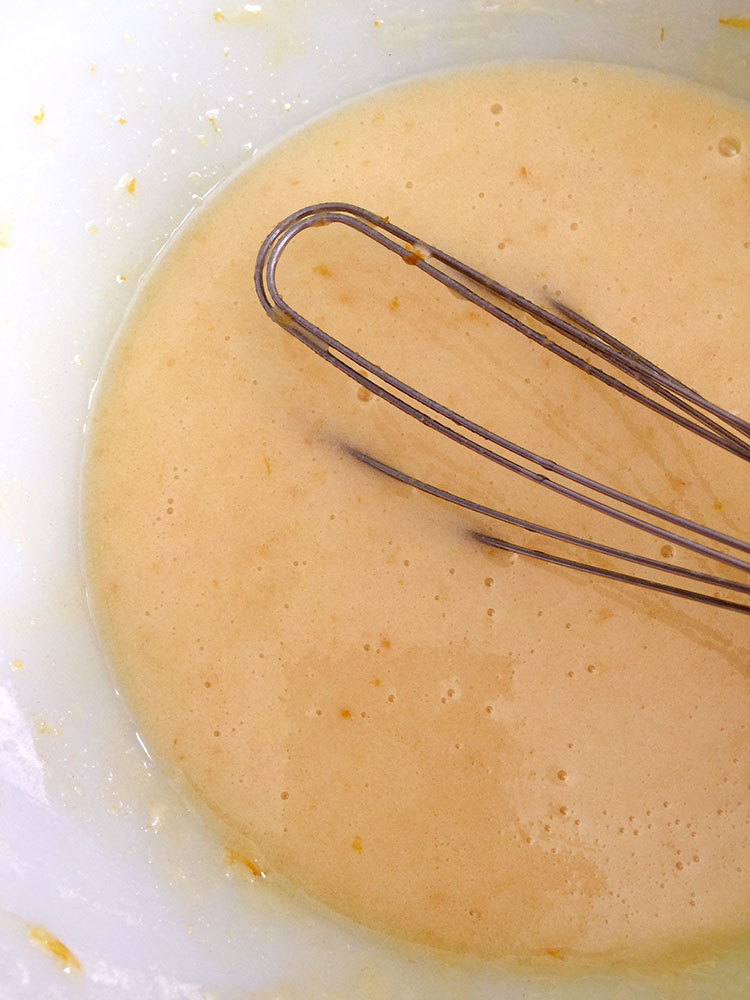
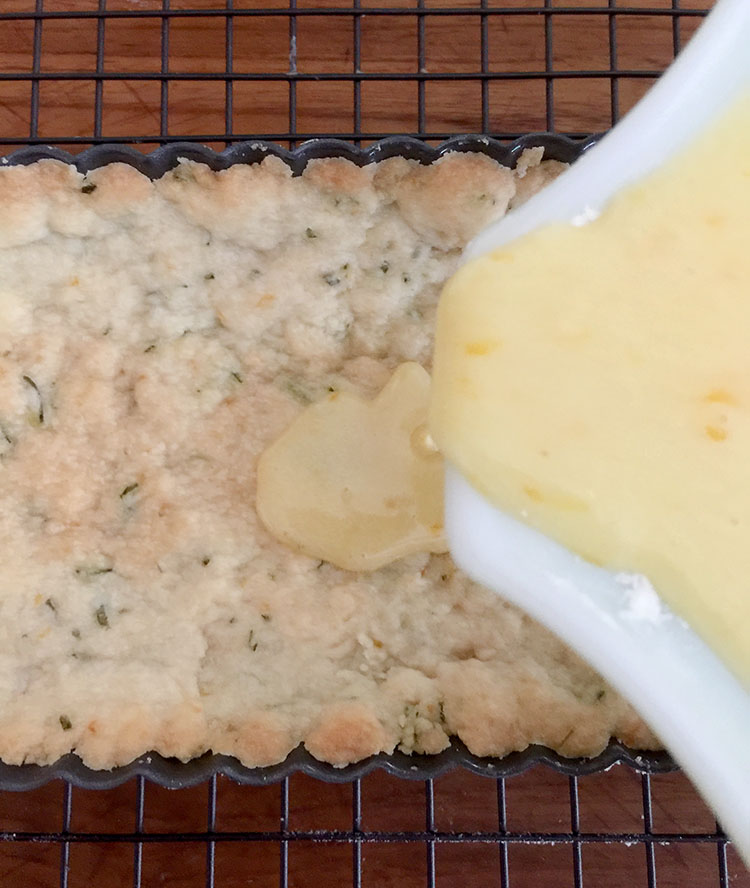
[I] was a bit concerned that there would be too much filling for the new dimensions of tart (and the rather shallow pan), but I managed to get it all in. It came up to the edge of the crust, so I thought it would be a good idea to place the tart on a sheet pan for baking.
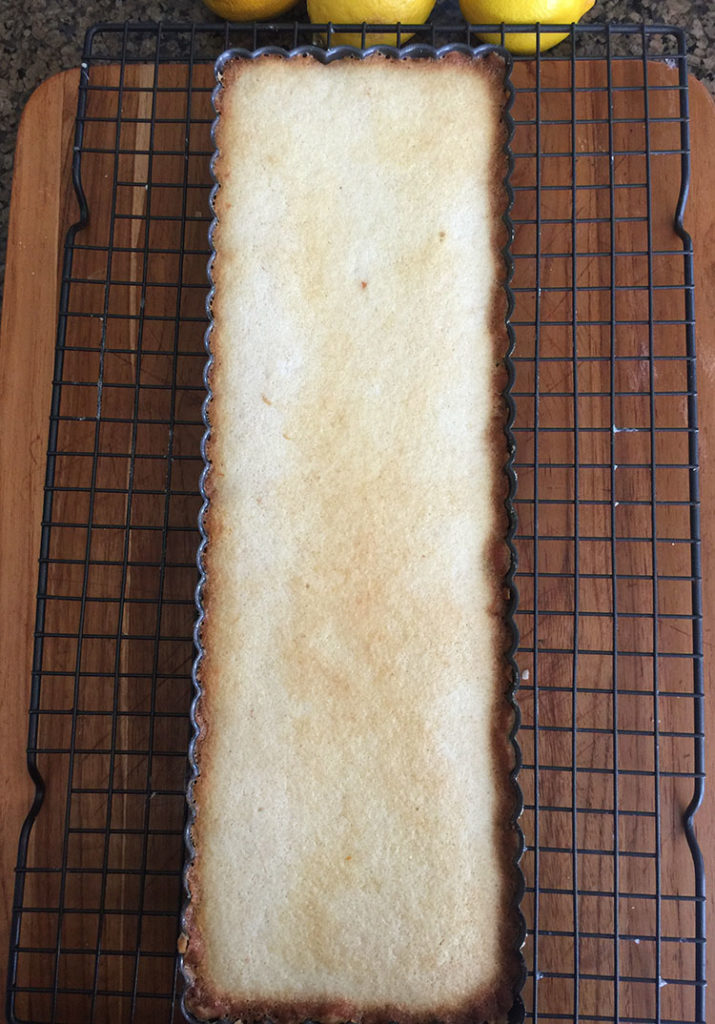
[T]he tart came out of the oven perfectly, not over-filled and just enough to make a lush-looking finished plank of lemon bar. I decided to chill the tart overnight in the fridge to make sure it was completely set and all the lemon and rosemary flavors had time to completely come to fruition.
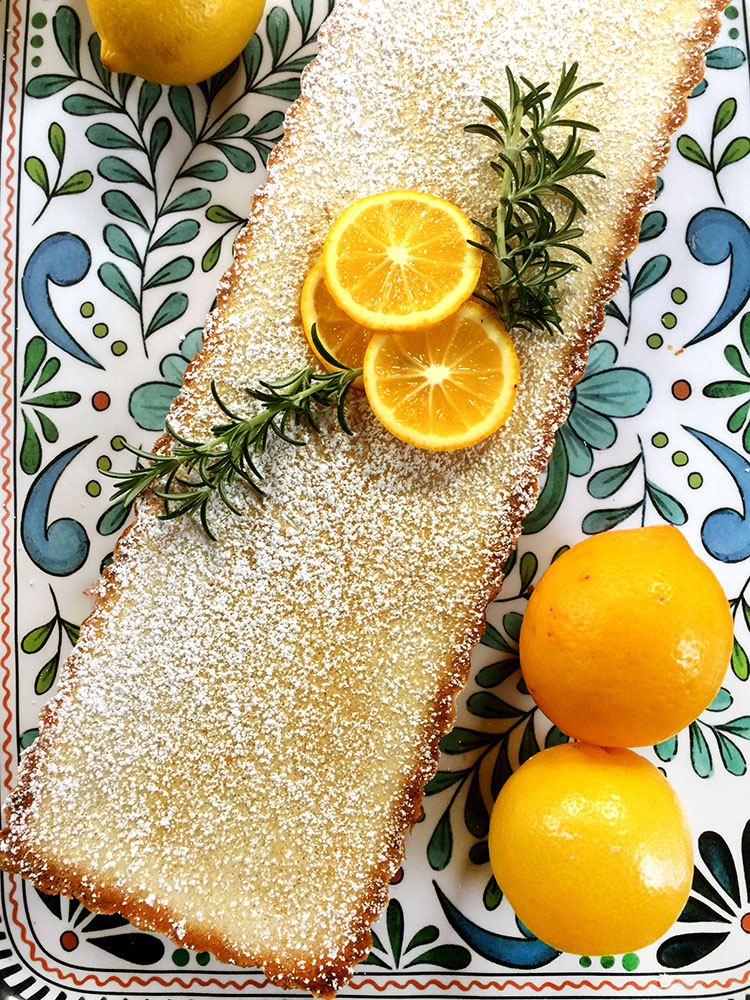
[T]he tart released easily from the pan (note to self: do remember this, come Thanksgiving). I dusted it very lightly with confectioner’s sugar and added a little garnish of sliced Meyer lemon and sprigs of rosemary. It was beautiful, fit for any special occasion.
I cut the tart in one-inch horizontal slices, which held their shape and allowed me to see all that voluptuous filling.
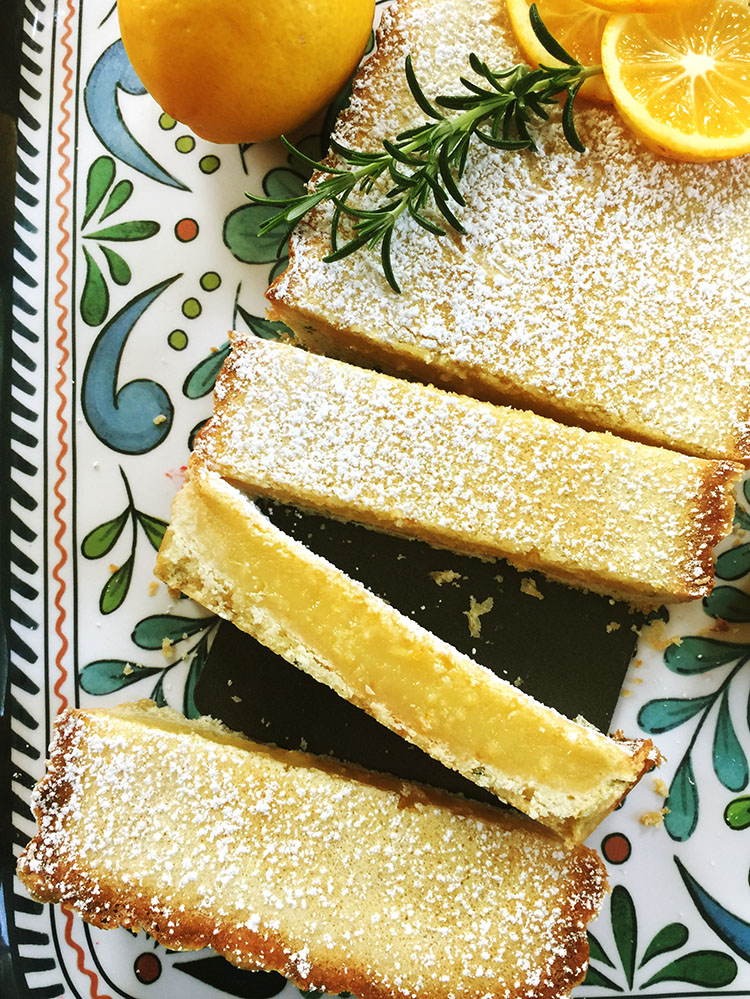
[T]he buttery crust, dotted with bits of rosemary, held that lush lemon filling, similar to a curd, but slightly thicker. A bite into that sweet, soft tartness, fully celebrating lemon, as it should, then a final underscore of herb. It took me back out to my garden, in that moment, just like I had been earlier when I was gathering my ingredients. What a treat! Any lemon or lemon bar lover would be well-pleased.
Rosemary Lemon Bar Tart
Adapted from Lemon Bars recipe from “Barefoot Contessa Parties!†(Clarkson Potter; 2001)
Makes 12 1-by-4-inch or 24 1-by-2-inch bars
- For the crust:
- 1 stick softened butter
- 1/4 cup granulated sugar
- Pinch of salt
- 2 teaspoons lemon zest
- 2 tablespoons finely chopped fresh rosemary
- 1 cup all-purpose flour
- For the filling
- 3 large eggs at room temperature
- 1-1/2 cups granulated sugar
- 1 tablespoon grated lemon zest
- 1/2 cup freshly squeezed lemon juice
- 1/2 cup all-purpose flour
- Confectioner’s sugar for dusting
Heat oven to 350°. For the crust, cream together the butter and granulated sugar with an electric mixer until light and fluffy Blend in salt, zest and rosemary and mix until well-blended. Add in flour and mix until just blended together. Dough will be crumbly.
Press dough evenly across bottom and up sides (at least 1/2-inch) of a 4.5-by-14-inch tart pan (one could also probably use a square (8-by-8-inch cake pan). Chill the crust at least 10 minutes. Bake crust for about 10 to 12 minutes or until just lightly brown. Set aside to cool completely, but leave the oven on.
For the filling, whisk the eggs, sugar, zest, juice and flour together until all are thoroughly blended. Pour over the cooled crust. Place crust on a baking sheet and bake for about 20 minutes or until the filling is set (if you shake the pan, the filling will jiggle just slightly in the middle). Let the bars cool completely. You can also chill the tart in the refrigerator until ready to serve. Dust with confectioner’s sugar and cut into fingers or small squares.